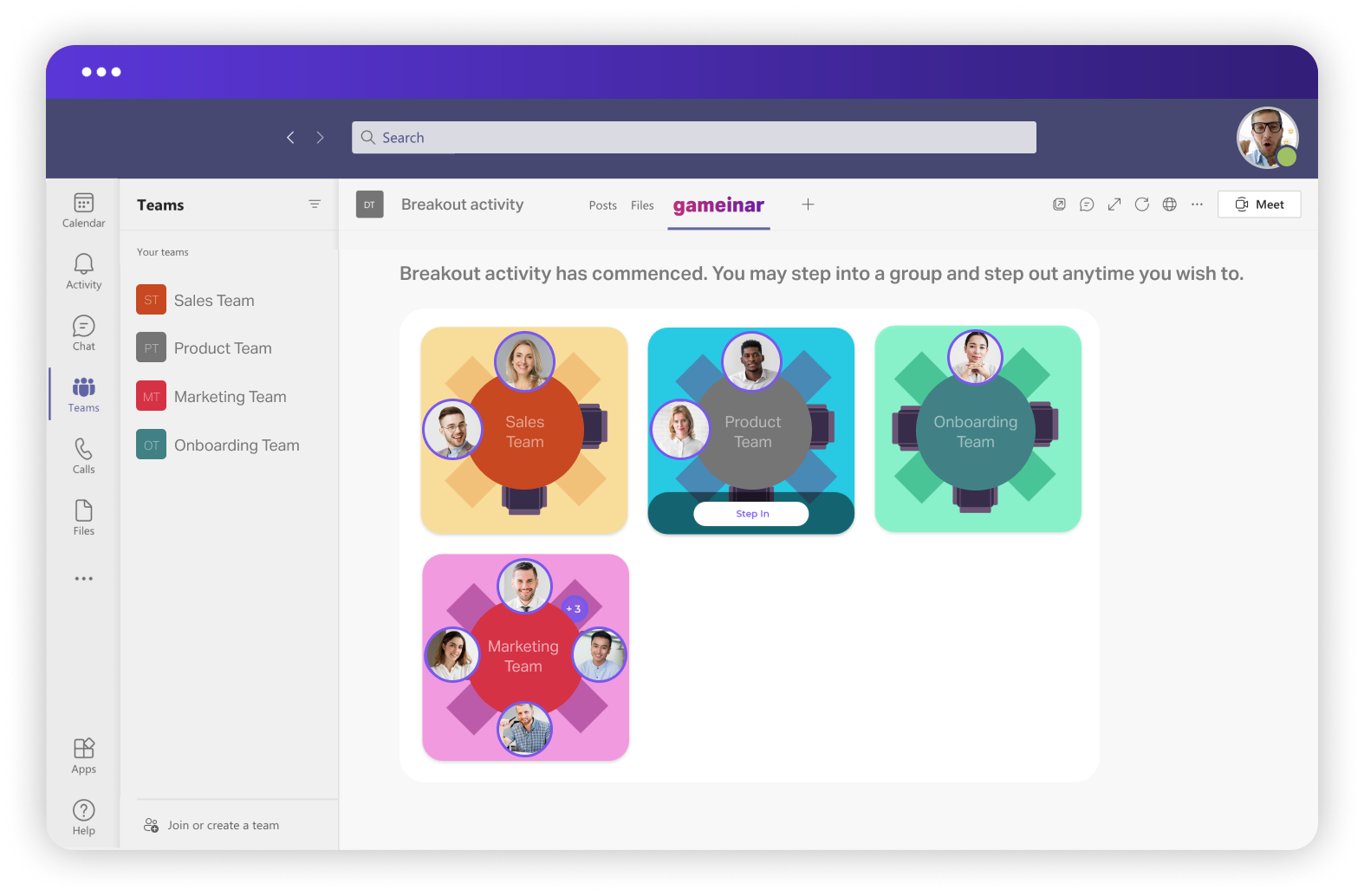The role of Learning and Development (L&D) has evolved from a mere departmental function to the backbone of organizations. In the past, L&D faced challenges in delivering personalized employee training, hindering efficient skill development. However, the landscape has transformed with the advent of Generative Artificial Intelligence (GenAI). Unlike traditional software, GenAI learns from data, autonomously creating content and making decisions.
Before GenAI, L&D struggled to meet diverse learner needs, leading to suboptimal outcomes. Recognizing these limitations, organizations turned to GenAI for a transformative solution. The integration of GenAI, powered by natural language processing (NLP) and adaptive algorithms, has ushered in a new era of customized learning journeys, where organizations can incorporate GenAI to understand the strengths and weaknesses of learners in their learning journeys. Research by Gallup highlights that strength-based learning can result in up to 23% higher employee engagement and 73% lower attrition.
Here we explore how organizations can enhance their L&D success in 2025 and beyond by harnessing the capabilities of GenAI.
The Role of GenAI in Learning & Development
The learning and development function can benefit from GenAI tremendously in multiple ways. However, the key areas in which GenAI plays a transformational role are as follows:
Enhances Traditional Learning Methods
GenAI is revolutionizing L&D by replacing one-size-fits-all methods. Unlike traditional approaches, GenAI brings a personalized touch, utilizing advanced algorithms to analyze individual learning patterns, preferences, and strengths.
In contrast to predetermined structures in classroom or online courses, GenAI introduces adaptability. It identifies gaps in understanding, progress, and engagement, dynamically adjusting content delivery to match the learner's pace.
This adaptability ensures a departure from a rigid, one-speed-fits-all learning environment, fostering a more efficient and engaging learning experience.
Facilitates Adaptive and Personalized Learning
Through NLP and adaptive algorithms, GenAI analyzes user interactions, learning preferences, and performance metrics in real-time. This data-driven approach enables GenAI to dynamically adjust the difficulty, format, and pace of learning materials and enhance the learning agility of employees.
Imagine a scenario where a GenAI-powered learning platform identifies a learner's proficiency in a particular topic. Instead of going over the basics repeatedly, the platform intelligently accelerates the employee learning journey. It keeps the learner consistently challenged at the right level. Similarly, if a learner finds a concept tricky, GenAI steps in to offer extra support, resources, or different explanations to ensure a better understanding of the topic.
This adaptability extends beyond content delivery to assessment methods. GenAI can craft assessments that align with individual learning styles, ensuring a more accurate reflection of true comprehension. By tailoring learning experiences to individual needs, GenAI fosters a sense of empowerment, motivation, and ownership in the learning process, ultimately leading to more effective skill acquisition and knowledge retention. According to Deloitte, AI-driven learning solutions have led to a 20% increase in employee engagement and a 15% boost in knowledge retention.
Emerging Trends in GenAI for L&D
-
Adaptive Learning Platforms: GenAI is driving the development of adaptive learning platforms, such as Disprz AI-powered skilling platform that customize content delivery based on individual progress, preferences, and learning styles, ensuring a more personalized and effective learning experience.
-
Real-time Feedback Mechanisms: The integration of GenAI enables the implementation of real-time feedback mechanisms, providing instant insights into learner performance. This facilitates timely interventions and adjustments to optimize the learning process.
-
Virtual Reality (VR) and Augmented Reality (AR) Integration: The combination of GenAI with VR and AR technologies is emerging as a powerful trend. This fusion creates immersive learning environments, allowing learners to engage with content in interactive and realistic simulations, enhancing both understanding and retention.
-
NLP Advancements: GenAI's continuous advancements in NLP contribute to more sophisticated interactions between learners and AI-driven systems. This allows for seamless communication, understanding nuanced queries, and delivering contextually relevant information.
-
Predictive Analytics for Learning Outcomes: GenAI's analytical capabilities extend to predicting learning outcomes based on historical data. This facilitates proactive adjustments to learning paths, enabling L&D teams to address potential challenges and make adjustments to learning courses accordingly for organizations.
-
Gamification and Interactive Content: GenAI is driving the gamification of learning content, making learning more engaging and enjoyable. By incorporating interactive elements, such as quizzes and simulations, GenAI ensures a dynamic and participatory learning experience.
Figure 1: Gaminar feature in advanced learning platform

-
Continuous Learning Support: GenAI doesn't confine learning to specific courses; it supports continuous learning by recommending additional resources, suggesting relevant topics, and adapting to the evolving needs of individuals throughout their professional journey.
Figure 2: Content recommendations based on learner’s proficiency
-
Collaborative Learning Environments: GenAI facilitates collaborative learning by creating intelligent forums that encourage knowledge sharing among learners. This helps to identify expertise within a community, fostering a culture of collaborative learning and skill exchange.
Not just this, McKinsey research shows that GenAI could enable automation of up to 70 percent of business activities, across almost all occupations, between now and 2030, adding trillions of dollars in value to the global economy.
Challenges in Training Program Administration by L&D Teams
L&D administrators face their own set of challenges in managing employee training programs:
-
Content Relevance: Identifying and analyzing relevant content amidst an abundance of resources can be a daunting task for administrators.
-
Limited Tacit Knowledge Sharing: Employees lack a dedicated platform to share their valuable, experiential knowledge. This absence makes it challenging for administrators to tap into the wealth of insights that exist within the team.
-
Vendor and SME Reliance: Administrators heavily depend on vendors and subject matter experts (SMEs) for content updates. This reliance can be time-consuming and may not always align with the dynamic changes happening in the industry.
-
Administrative Overhead Burden: The management of tasks like classroom training and analytics becomes a time-consuming process. This administrative overhead leaves limited room for strategic planning, hindering the organization's ability to focus on long-term goals.
How can GenAI Solve the Problem?
Content Authoring in GenAI
GenAI enhances content creation and authoring by providing the ability to take various forms of input, such as PowerPoint files, documents, blogs, and training recordings, and converting them into more engaging formats. With GenAI, content can be transformed into simple videos, real-like videos for platforms like Instagram, and classic courseware. This technology democratizes authoring by allowing anyone to create content, including SMEs and learners. By leveraging GenAI, content creation becomes more efficient, dynamic, and appealing to the target audience, particularly millennials.
Discovery and Personalization in GenAI
GenAI improves content discovery and personalization for learners in several ways. Firstly, GenAI can enhance the search experience by providing more relevant and accurate search results. With the help of large language models, GenAI can understand the intent behind a learner's search query and provide highly relevant content suggestions. This ensures that learners spend less time searching for relevant content and can quickly find the information they need.
Secondly, GenAI can summarize and extract key information from large amounts of content. This capability is particularly useful when learners are faced with lengthy recordings or videos. GenAI can automatically summarize these materials, making it easier for learners to grasp the main points without having to watch or read the entire content.
Furthermore, GenAI can personalize learning based on individual learner's goals and development plans. By integrating with performance appraisal systems and goal-setting platforms, GenAI can identify the skills gap of learners and recommend specific learning resources to help them achieve their goals. This personalized approach ensures that learners receive targeted and relevant content recommendations that align with their individual needs.
Learning Administration in GenAI
GenAI can greatly improve administration in the learning environment by automating and streamlining various tasks.
Here are some ways in which GenAI can enhance learning administration:
1) Conversational Learning Administration
GenAI can enable the creation of virtual assistants that make administration easier. These virtual assistants can understand and respond to natural language queries, allowing administrators to perform tasks simply by typing a question or command. This conversational interface makes it more efficient and user-friendly to manage administrative tasks.
2) Content Management
GenAI can assist in managing learning content by automatically organizing and categorizing it. This helps administrators easily locate and assign relevant content to learners. The AI can also suggest appropriate content based on learner profiles, goals, and performance, making content management more personalized and efficient.
3) Task Automation
GenAI can automate routine administrative tasks, such as assigning courses, tracking progress, and sending reminders. This reduces the manual effort required by administrators and allows them to focus on more strategic aspects of their role.
4) Analytics and Reporting
AI-powered analytics can provide administrators with valuable insights into learner engagement, performance, and training effectiveness. GenAI can generate reports and visualizations that help administrators make data-driven decisions and identify areas for improvement.
5) Learning Pathway Authoring
GenAI can assist administrators in creating personalized learning pathways for individuals or groups. By analyzing learner profiles, goals, and performance data, the AI can suggest relevant courses and resources to create a customized learning journey.
Conclusion
Before the introduction of GenAI, L&D teams grappled with the limitations of one-size-fits-all approaches, struggling to meet the diverse needs of learners. The challenges ranged from identifying relevant content in an abundance of resources to tapping into valuable tacit knowledge and managing dependencies on vendors and SMEs. The administrative overhead, coupled with the need for strategic planning, posed further hurdles.
GenAI stands as a transformative force poised to revolutionize L&D in 2025 and beyond. Its ability to overcome historical challenges, enhance personalization, and streamline administrative processes marks a paradigm shift in the L&D function. As organizations embrace the potential of GenAI, they open doors to a future where learning is not just a process but a dynamic, personalized learning journey that unlocks the full potential of every individual, contributing to the collective growth of the organization.
Schedule a demo now. Our experts will help you unlock the complete power of GenAI. This will lead to incredible success in 2025 and beyond.









